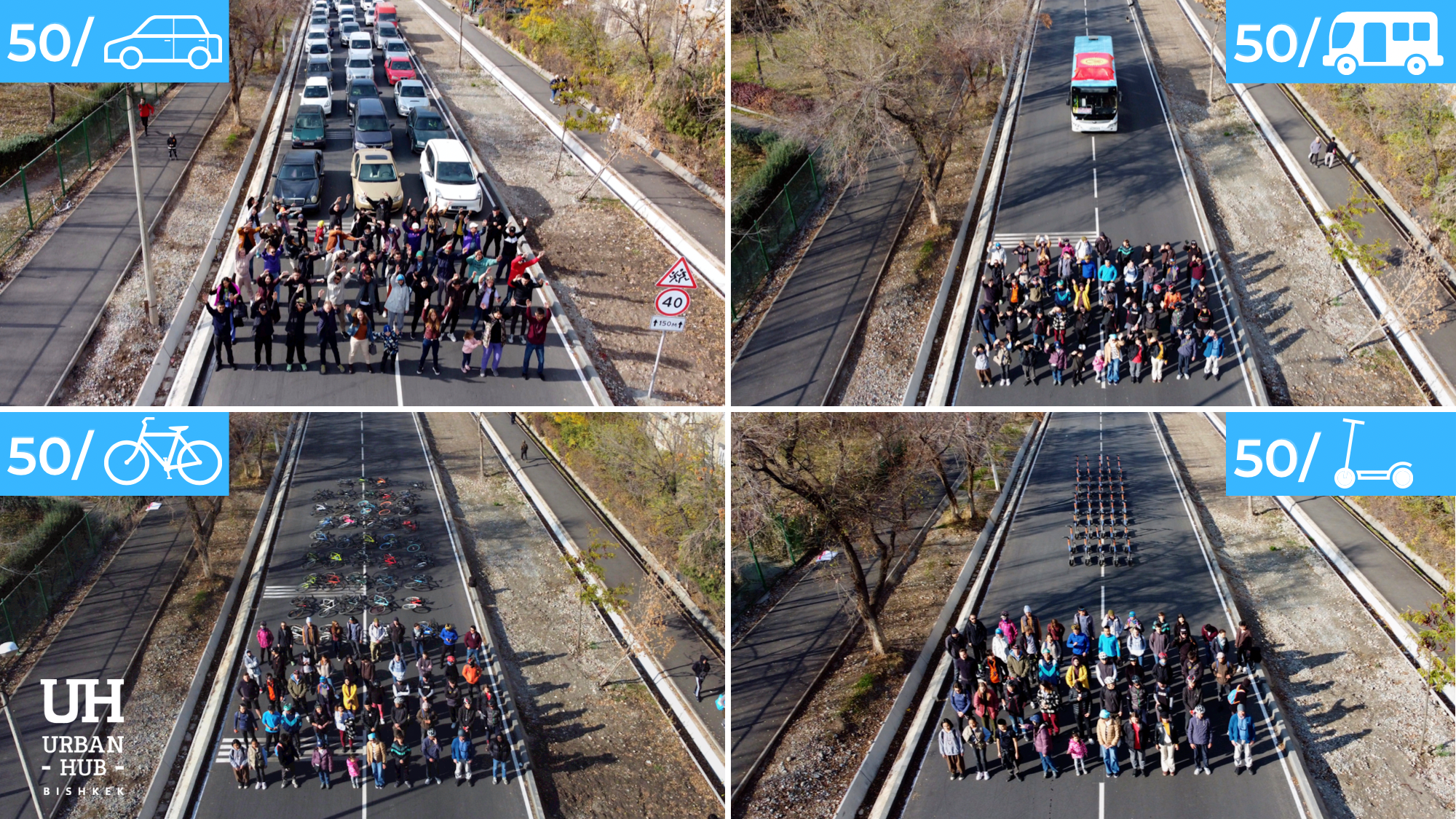“1 bus instead of 50 cars” Action in Bishkek

On November 5, 2022, members of the Urban HUB Bishkek community held a campaign “1 bus instead of 50 cars” to demonstrate how the city space is used depending on the type of transport used by citizens.
Fifty cars occupied an area of 600 square meters of the road. At the same time, fifty people with bicycles occupied only 70 square meters. meters, with scooters — 50, and also easily fit in one bus, taking up only 30 square meters of the road.
A passenger car can accommodate 4 people, but measurements in Bishkek showed that in 70% of cases cars carry 1 person — the driver. That is, cars take up the most space on the roads, but carry the least number of people.
The construction of new roads and highways for cars does not solve the problem of traffic jams and congestion. Studies and experience of other countries prove that the more conditions are created for cars, the more they become, and over time, traffic jams form again. One of the most effective ways to unload roads is to encourage people to use their own car less to get around the city and switch to public transport and means of individual mobility (bicycles, scooters, etc.).
Similar actions were held in different cities of the world. Now Urban HUB Bishkek has organized it in Bishkek. This is especially true now that Bishkek is regularly included in international lists of the dirtiest cities in the world due to air pollution.
Cars run on fuels containing a large amount of petroleum products — when they are burned, exhaust gases are released. Oil is made up of hydrocarbons, which, when burned, release significant amounts of pollutants, in particular nitrogen dioxide and volatile organic compounds. More than 200 chemicals have been found in exhaust gases.
In addition to exhaust gases, solid particles formed during vehicle braking enter the atmospheric air — due to the interaction of the road and wheels, small particles of rubber, metals and asphalt are released.
In recent years, a significant increase in the number of cars has been recorded in Kyrgyzstan, and this trend continues. There are about 1.3 million cars in the country, about 1 million of them are cars (79%).
There are only 90 municipal buses and about 140 small private buses (ISUZU), 130 trolleybuses, more than 1,500 minibuses, and almost half a million cars in Bishkek
What can be done to improve this situation?
👉 change from personal cars to bicycles, scooters or public transport, when possible;
👉 to implement projects in the city with dedicated lanes for public transport;
👉 develop a comprehensive and safe urban cycling infrastructure.
Thanks to all the citizens who took part in the filming. We also thank the Mayor’s Office of Bishkek for assistance in holding the action 💚
The action was organized with the support of the Kyrgyz-German small project “Fighting Air Pollution in the Kyrgyz Republic”, implemented by GIZ.
* Urban HUB Bishkek is a community of urbanists and urban ecologists in Bishkek. We work on landscaping, air quality, waste management, urban infrastructure and mobility. Residents of the community: Archa Initiative, MoveGreen (Public Association MoveGreen), Peshcom civil initiative, Bishkek School of Contemporary Art (BSCA), Tazar and the City Initiatives Public Foundation. As part of our community activities, we promote clean air, increase green spaces, develop large-capacity ecological public transport, and promote cycling infrastructure.


